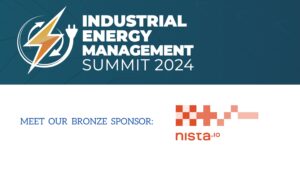Data centers enable the digital world we see today. However, these large computing power plants have high energy costs. Consequently, they are under tremendous pressure in all storage areas to maintain balance. This is between environmental sustainability and efficiency. The reason remains the growing demand for data processing and storage. Energy efficiency is critical to profitability and competitiveness as energy prices make up a significant portion of operating costs.
This article dives into colocation data center strategies that provide reliable, efficient services while improving energy efficiency in data centers. It will help reduce costs and reduce environmental impact.
Colocation Data Centers: Optimizing Cooling Systems for Energy Savings
The cooling system is a priority for colocation data centers. This is because it accounts for more than 40% of the energy consumption in the data center. So, let’s take a look at how data centers can do that:
Intelligent Cooling Management
Leverage intelligent cooling management systems that dynamically adjust cooling output based on real-time thermal conditions and server utilization. Furthermore, advanced sensors, analytics, and automation precisely match cooling delivery with demand. As a result, it minimizes energy waste while maintaining appropriate temperature and humidity levels.
Economizer Modes and Free Cooling
In favorable climates, leverage economizer modes and free cooling strategies to reduce the energy required for cooling. Moreover, economizer modes use outside air for cooling when the ambient temperature is lower than the desired data center. Meanwhile, free cooling systems incorporate evaporative or water-based cooling mechanisms.
Liquid Cooling Solutions
Examine liquid cooling options that can greatly increase cooling efficiency and permit larger computer density, such as immersion or direct-to-chip cooling. So, these systems can help recover waste heat for heating or reuse, and they do away with the requirement for energy-intensive air conditioning.
Computational Fluid Dynamics (CFD) Analysis
Use CFD analysis to optimize airflow and locate hotspots or ineffective cooling zones inside the data center. So, the strategic positioning of cooling units, containment plans, and other design changes that improve cooling efficiency may be guided by this data-driven approach.
Colocation Data Centers: Enhancing Infrastructure Efficiency
Colocation data centers can use various strategies to optimize the performance of their entire infrastructure. Moreover, these tactics, which include buying high-efficiency equipment and implementing virtualization and consolidation, can save significant energy.
Virtualization and Consolidation
To lower the total hardware footprint and maximize resource utilization, implement server consolidation and virtualization. The number of active servers needed is decreased when several virtual machines or applications are combined onto fewer physical servers, which lowers the energy consumption for cooling and powering the servers.
High-Efficiency Power and Cooling Equipment
Invest in cooling systems that are high in efficiency, UPS, and power distribution units. These combine advanced technology with design thinking to provide maximum energy efficiency in data centers and also waste reduction.
Airflow Management and Containment
Use airflow control techniques to stop hot and cold air streams from combining, such as cable management, blanking panels, and hot/cold aisle confinement. This lowers the energy needed to maintain desired temperatures and also increases cooling efficiency.
Power Usage Effectiveness (PUE) Monitoring
Maintain a close eye on and maximize the building’s PUE, which is a ratio of the total energy used by the data center to the energy used by its IT hardware. A lower PUE denotes more efficiency and can be used to pinpoint areas in need of development.
Colocation Data Centers: Leveraging Renewable Energy Sources
Several data centers offering colocation facilities have started considering renewable energy sources. As a result, it leads to a cleaner and more resilient profile of energy. So, let’s go in depth of it ahead:
On-site solar and Wind Power Generation
Solar photovoltaic or wind turbines can be added to the site to partially offset the consumption of energy. As a result, it can reduce the carbon footprint and reliance on the grid.
Participation in Renewable Energy Programs
Participate in renewable energy programs that are utility-sponsored. Moreover, renewable energy credits can also be purchased. It helps to promote the growth and development of renewable sources. This is in locations where on-site renewable energy generation is not practical.
Energy storage and microgrids
See the potential synergies between energy storage and microgrids. It helps to enhance energy resilience and facilitate the use of intermittent renewable sources. It also provides backup power during outages or spikes in grid demand.
Colocation Data Centers: Data Center Infrastructure Management (DCIM)
Energy efficiency optimization and pinpointing of opportunities require careful management and monitoring. This is of data center infrastructure. Colocation data centers can accomplish these goals with DCIM systems. It offers strong tools. Let’s look more into it ahead:
Real-time Monitoring And Analytics
Use data center Infrastructure Management software to get real-time visibility. This is into energy use, environmental conditions, and performance of the infrastructure. Moreover, obtain and analyze the data from different sensors and observation points. It helps to identify areas that might be optimized or have inefficiencies.
Automated Controls and Predictive Maintenance
Automated controls can be incorporated into DCIM systems to dynamically adjust infrastructure configurations based on projections and actual conditions, ensuring optimal performance and efficiency. Utilise predictive maintenance techniques to anticipate future equipment deterioration or malfunctions, enabling proactive maintenance.
Capacity Planning and Lifecycle Management
Utilise DCIM solutions for capacity planning and lifecycle management to make the best use of your resources and to promptly replace or upgrade old or inefficient equipment. This proactive approach may lower energy waste and maintain optimal efficiency over the facility’s lifetime.
Integration with Building Management Systems (BMS)
Integrate DCIM solutions with Building administration Systems (BMS) to enable comprehensive monitoring and administration of the entire facility, including HVAC, lighting, and other building systems. This link can lead to new opportunities for energy savings and assist in coordinating energy management strategies.
Conclusion
Colocation data center facilities need other focus on energy efficiency to stay in the competition, cut costs, and achieve sustainability. The tactics discussed in the article will effectively reduce the carbon footprint and reduce energy consumption. However, if you want to learn in-depth about sustainability in data centers make sure you attend The Energy Efficiency for Data Centers conference, which is set for May 16-17, 2024, in Dallas TX, USA. The event will help attendees stay up to date with advances in the field, insights from experts, and more. It will also offer networking opportunities to make sure you stay ahead of the curve. So, don’t wait any further and register today!





